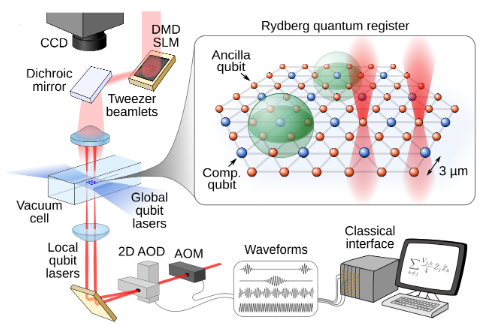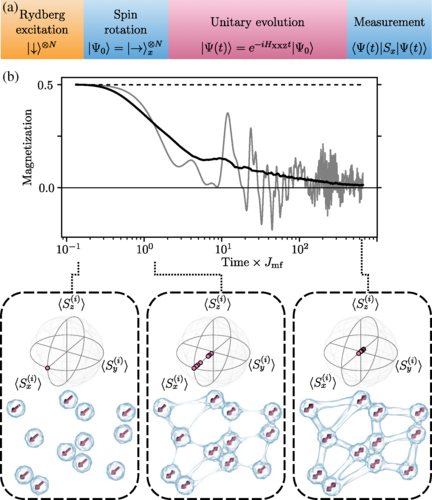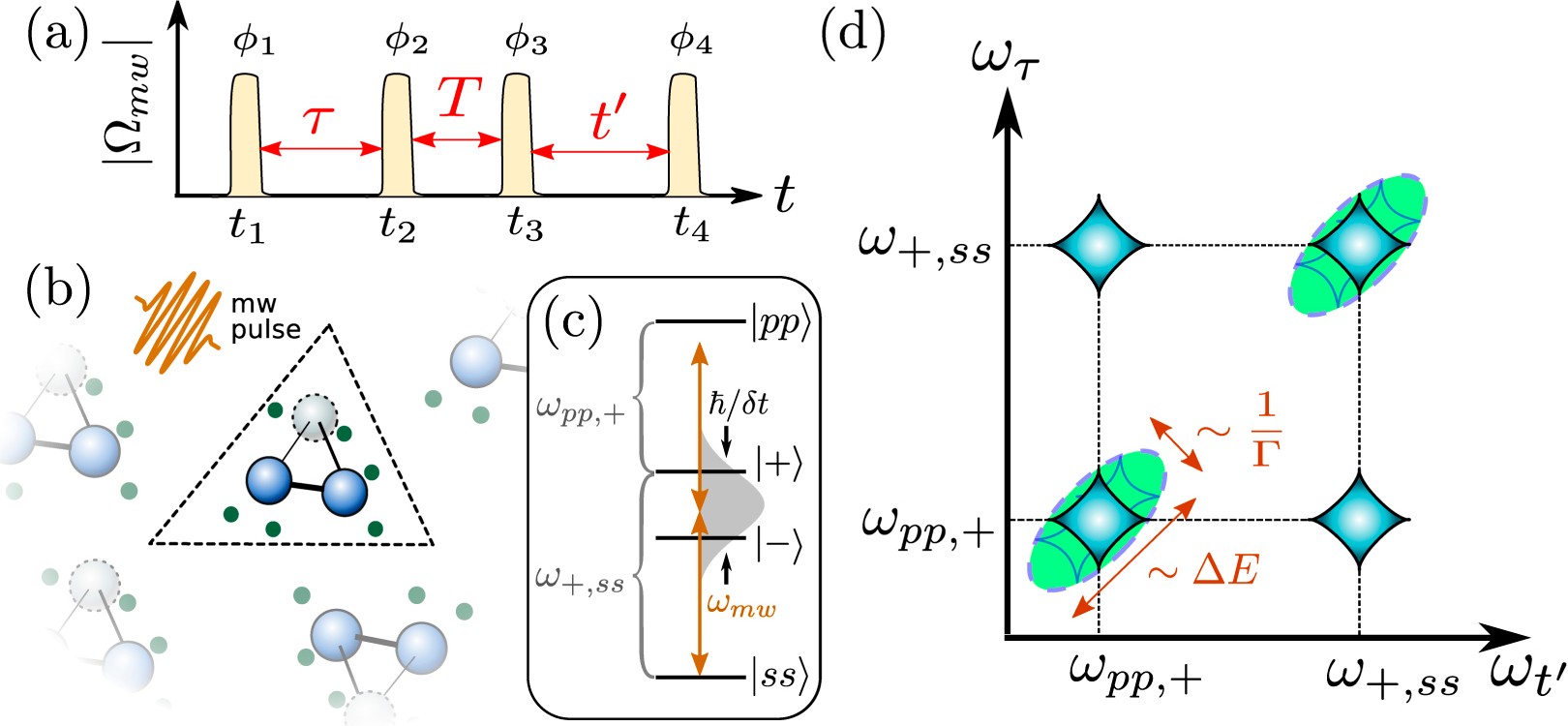Quantum approaches to chemistry and material design are expected to open horizons in almost every aspect of human life ranging from science and medicine to climate and energy. However, for most relevant problems, a full theoretical treatment of quantum dynamics is essentially impossible.
To overcome this challenge, we are establishing a fully-programmable quantum dynamics simulator which exploits Rydberg-dressed atoms to mediate interactions far beyond nearest neighbours and includes “molecular” degrees of freedom such as vibrations and correlated system-bath interactions.
More details about our research can be found in the following papers
Quantum simulation and computing with Rydberg-interacting qubits published in AVS Quantum Science (invited review)
Arrays of optically trapped atoms excited to Rydberg states have recently emerged as a competitive physical platform for quantum simulation and computing, where high-fidelity state preparation and readout, quantum logic…
Glassy Dynamics in a Disordered Heisenberg Quantum Spin System published in Phys. Rev. X
Understanding the dynamics of strongly interacting disordered quantum systems is one of the most challenging problems in modern science, due to features such as the breakdown of thermalization and the…
Two-dimensional spectroscopy of Rydberg gases published in New J. Phys
Two-dimensional (2D) spectroscopy uses multiple electromagnetic pulses to infer the properties of a complex system. A paradigmatic class of target systems are molecular aggregates, for which one can obtain information…
Hundreds of microscopic atomic ensembles in optical tweezer arrays published in npj Q. Info.
Neutral atoms in optical tweezer arrays have recently emerged as one of the most versatile platforms for quantum many-body physics, quantum simulation and computation, where high quality qubits, fast quantum…
Unitary and non-unitary quantum cellular automata with Rydberg arrays published in PRL
We propose a physical platform for quantum information processing that is inherently parallelisable, does not require individual addressing and takes full advantage of both unitary and non-unitary multiqubit interactions. The…
Diffusive to non-ergodic dipolar transport in a dissipative atomic medium in Phys. Rev. Lett.
We highlight a well controlled experimental system for studying transport phenomena consisting of strongly interacting impurities in a Rydberg-dressed ultracold gas, which due to its long-range 1/R^3 hopping and controllable…
Simulating quantum spin models using Rydberg-excited atomic ensembles in magnetic microtrap arrays
In collaboration with Prof. Peter Hannaford (Swinburne, Australia) and Dr. Alexander Glaetzle (IQOQI, Innsbruck, Austria, and Oxford, UK), we proposed a scheme to simulate lattice spin models based on strong,…
Correlated Exciton Transport in Rydberg-Dressed-Atom Spin Chains, in Phys. Rev. Lett.
Transport is an archetypical example of complex non-equilibrium phenomena impacting essentially all areas of physics. This theoretical work was motivated by the lack of a good theoretical description of our…
Quantum Simulation of Energy Transport with Embedded Rydberg Aggregates, in Phys. Rev. Lett.
In a collaboration with Sebastian Wüster and Alexander Eisfeld (MPIPKS Dresden) we showed that impurities embedded in a Rydberg dressed gas could be used as a quantum simulator for energy…
Observing the Dynamics of Dipole-Mediated Energy Transport by Interaction-Enhanced Imaging, in Science
By synthesising an artificial quantum system, we have simulated key processes of photosynthesis on a quantum level with high spatial and temporal resolution and discovered new properties of energy transport….



